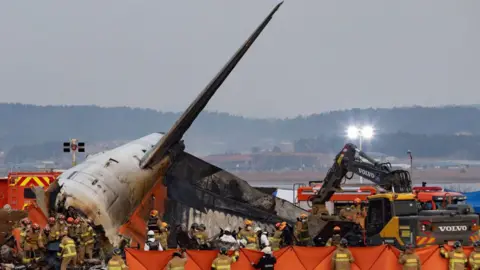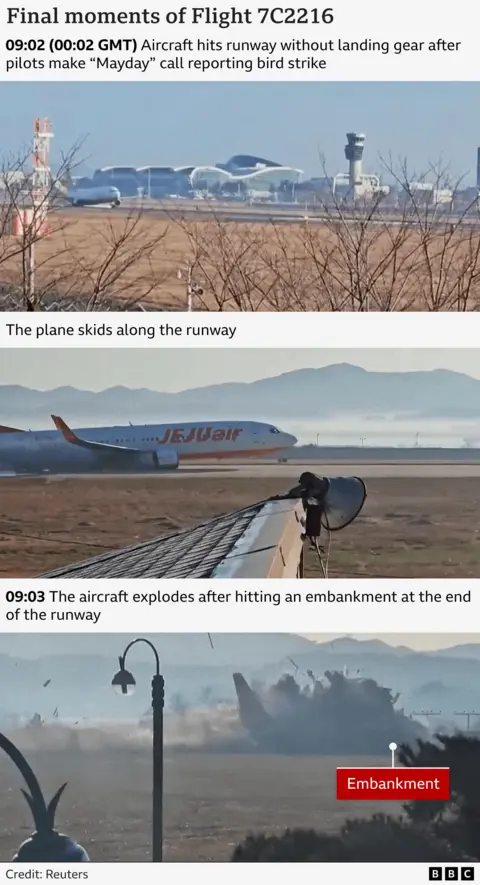 Getty Images
Getty ImagesAll South Korean airports will need to install bird detection cameras and thermal imaging radars, after an air crash in December last year killed 179 people.
The rollout is set to happen in 2026.
Investigators said last week that they had found evidence of a bird strike on the Boeing 737-800 plane – with feathers and blood stains found on both the plane’s engines.
An investigation into the crash – the deadliest on South Korean soil – is still ongoing but will focus on the role of the bird strike as well as a concrete structure at the end of the runway, which the plane slammed into after making an emergency landing.
“Bird detection radars will be installed at all airports to enhance early detection of distant birds and improve response capabilities for aircraft,” said the Ministry of Land in a statement on Thursday.
Bird detection radar detects the size of birds and their movement paths and relays this information to air traffic controllers.
The ministry added that all airports would also need to be equipped with at least one thermal imaging camera.
Currently only four airports in South Korea are equipped with thermal imaging cameras. It is unclear if any of them have bird detection radars in place.
Sites that attract birds, like rubbish dumps, must also be moved away from airports.
Earlier last month, South Korea announced that seven airports would have their runway safety areas adapted following a review of all the country’s airports that was carried out after the crash.
The cause of the crash is still unknown but air safety experts had earlier said the number of casualties could have been much lower if not for the structure that the plane crashed into after making an emergency landing.
On 29 December, the plane, from budget airline Jeju Air, had taken off from Bangkok and was flying to Muan International Airport in the country’s south-west.
At about 08:57 local time, three minutes after pilots made contact with the airport, the control tower advised the crew to be cautious of “bird activity”.
At 08:59, the pilot reported that the plane had struck a bird and declared a mayday signal.
The pilot then requested permission to land from the opposite direction, during which it belly-landed without its landing gear deployed. It overran the runway and exploded after slamming into the concrete structure, a preliminary investigation report concluded.
Flight data and cockpit voice recorders stopped recording four minutes before the disaster, an investigation into the black boxes later found.
The 179 passengers onboard the Boeing B737-800 plane were aged between three and 78 years old, although most were in their 40s, 50s and 60s. Two cabin crew members were the only survivors.

